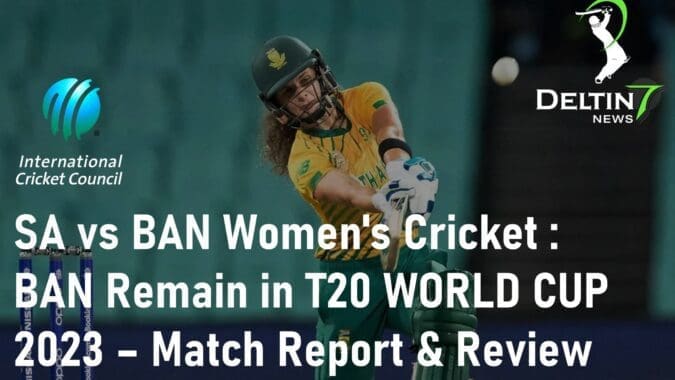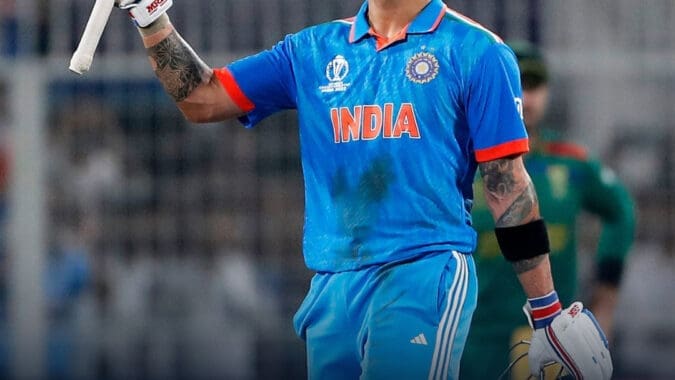
India’s T20I and ODI Squads for Sri Lanka Tour: 5 Standout Selection Decisions
The Board of Control for Cricket in India (BCCI) has announced the Indian squads for the upcoming tour of Sri Lanka, showcasing a mix of experienced veterans and rising stars. The tour will feature three T20Is and three one-day internationals (ODIs), providing an opportunity for the Men in Blue to fine-tune their preparations ahead of upcoming major tournaments.
Amidst the team selections, several noteworthy decisions have drawn the attention of cricket enthusiasts. From the captaincy changes to the inclusion and exclusion of key players, these selection calls will undoubtedly have a significant impact on the team’s performance and the larger picture of India’s cricketing landscape.
In this comprehensive analysis, we delve into the five most significant selection decisions made by the BCCI selectors for India’s tour of Sri Lanka. By exploring the rationale behind these choices and their potential implications, we aim to provide readers with a deeper understanding of the team’s composition and the strategic considerations that have shaped it.
#1 Sanju Samson’s Selective Inclusion
The ongoing debate surrounding the selection or non-selection of keeper-batter Sanju Samson has once again taken center stage with the announcement of the squads. While the 29-year-old finds a place in the T20I team, he has been left out of the ODI squad, a decision that is sure to spark discussions among fans and experts alike.
Samson’s recent performances have been noteworthy, as evidenced by his 58-run knock off just 45 deliveries in the fifth and final T20I against Zimbabwe in Harare. Moreover, it is worth noting that he was awarded the Player of the Match accolade in his last ODI outing for India, where he scored a remarkable 108 off 114 balls against South Africa in Paarl.
The selectors’ decision to include Samson in the T20I squad but exclude him from the ODI team suggests that they see him as a specialist in the shorter format, at least for the time being. With KL Rahul and Rishabh Pant being the preferred keeper-batter options in the ODI side, Samson’s path to regular international cricket in the 50-over format remains uncertain.
#2 Shubman Gill’s Dual Vice-Captaincy Role
The selection committee has entrusted young opener Shubman Gill with the responsibility of serving as the vice-captain for both the T20I and ODI squads. This decision underscores the faith the selectors have in Gill’s leadership abilities and his growing stature within the Indian team.
Gill’s recent performances have been nothing short of impressive. During the five-match T20I series in Zimbabwe, the 24-year-old was the leading run-scorer, amassing 170 runs at an average of 42.50 and a strike rate of 125.93. He also had the opportunity to captain the Indian team in that series, guiding the Men in Blue to a 4-1 victory.
While Gill’s captaincy stint with Gujarat Titans in the IPL 2024 season did not result in a playoff berth, the selectors seem to have recognized his potential and are keen on grooming him for greater leadership roles in the future. By appointing him as the vice-captain for both the T20I and ODI squads, the selectors are providing Gill with valuable experience and exposure to the demands of captaincy at the international level.
#3 Veteran Presence: Rohit, Virat, and Bumrah’s Selections
Amidst the flurry of selection decisions, the inclusion of seasoned campaigners Rohit Sharma, Virat Kohli, and Jasprit Bumrah has garnered significant attention. There were reports suggesting that these senior players might be rested for the ODI series, but the selectors have decided to retain them in the one-day squad.
The decision to have Rohit lead the ODI team is a logical one, as the experienced opener remains a crucial cog in India’s limited-overs setup. Kohli’s presence in the ODI squad is also a testament to his enduring class and the selectors’ belief in his ability to contribute to the team’s success.
However, the selectors have opted to rest Jasprit Bumrah for the ODI leg of the tour, a move that aligns with the team management’s strategy of managing the workload of key players. This decision is likely aimed at ensuring Bumrah’s fitness and availability for more critical assignments on the horizon, such as the 2025 Champions Trophy.
Had Rohit been rested for the ODIs, the selectors would have had to consider alternative captaincy options, with KL Rahul and Shubman Gill being the likely candidates. But with Rohit leading the one-day team, the transition of leadership responsibilities remains unaltered, at least for the time being.
#4 Riyan Parag’s Dual Inclusion
One of the more intriguing selection decisions is the inclusion of Riyan Parag in both the T20I and ODI squads. The 22-year-old all-rounder, who made his India debut during the tour of Zimbabwe, has been given another opportunity to showcase his abilities at the international stage.
Parag’s recent performances in the IPL 2024 season for the Rajasthan Royals (RR) were particularly noteworthy. He amassed 573 runs in 15 matches, averaging an impressive 52.09 and maintaining a strike rate of 149.22. Parag also demonstrated his all-round skills, picking up 41 wickets in T20Is and 50 scalps in List A matches with his leg-spin bowling.
While Parag’s international debut in Zimbabwe did not yield the desired results, with scores of 2 and 22, the selectors seem to have identified him as a player with immense potential. His inclusion in both the T20I and ODI squads suggests that the selectors are willing to invest in his development and provide him with the necessary exposure to hone his skills at the highest level.
#5 Exclusions: Jadeja, Gaikwad, and Chahal
The announcement of the squads has also seen the exclusion of several notable players, including Ravindra Jadeja, Ruturaj Gaikwad, and Yuzvendra Chahal.
Ravindra Jadeja, the veteran all-rounder, has been left out of the ODI squad despite his extensive experience of 197 one-day matches. The selectors have opted to look beyond Jadeja for the Sri Lanka tour, signaling a potential shift in the team’s composition and the search for new options in the middle order.
Ruturaj Gaikwad, who impressed during the Zimbabwe series with 133 runs in three innings at a strike rate of 158.33, has been dropped from the T20I team. The right-handed batter has also failed to find a place in the ODI squad, indicating that the selectors have decided to explore alternative options in the top order.
Furthermore, leg-spinner Yuzvendra Chahal, who was part of the Indian T20 World Cup squad but did not feature in a single game, has also been omitted from the squads. This decision suggests that the selectors are looking to experiment with different spin bowling options, possibly in an effort to strengthen the team’s spin attack for the upcoming major tournaments.
These exclusions highlight the selectors’ willingness to make bold decisions and shake up the team’s composition in search of the right balance and optimal performance.
Conclusion
The selection of the Indian squads for the Sri Lanka tour has undoubtedly generated significant discussion and debate within the cricketing fraternity. From the captaincy changes to the inclusion and exclusion of key players, these decisions reflect the selectors’ vision for the team’s future and their commitment to shaping a well-rounded, competitive unit.
As the Men in Blue embark on their journey to Sri Lanka, the spotlight will be firmly on the performance of these squads and the impact of these selection decisions. The T20I and ODI series will provide valuable insights into the team’s preparedness and the selectors’ ability to identify the right combination of players to spearhead India’s charge in the upcoming major tournaments.
Ultimately, the success or failure of these selection decisions will be determined by the team’s on-field performances and their ability to navigate the challenges presented by the Sri Lankan opposition. However, one thing is certain: the BCCI selectors have set the stage for an intriguing and potentially game-changing tour, leaving cricket enthusiasts eagerly anticipating the unfolding of these high-stakes narratives.














